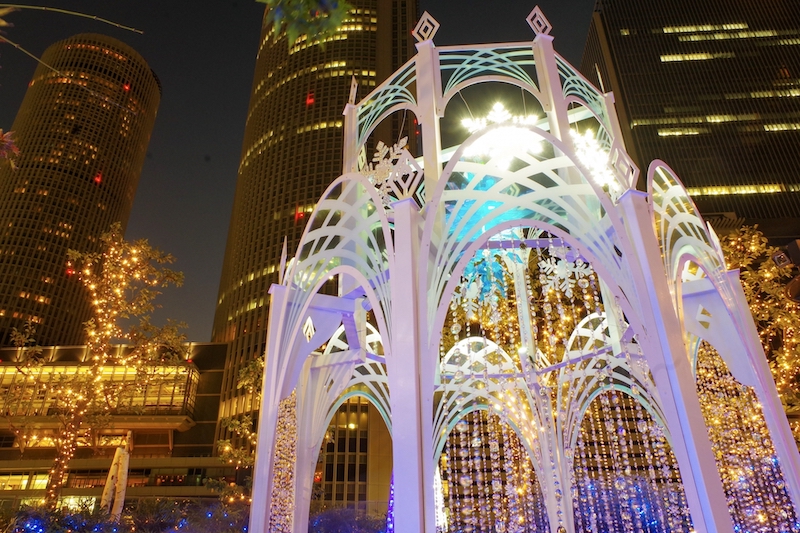Dec 26, 2024
Cool Japan – How to Stay Warm in the Japanese Winter
While winters in Japan’s more mountainous and northern regions get pretty chilly, here in Nagoya, temperatures rarely drop below zero. However, for some reason, I constantly feel frozen to my marrow, and I bet I’m not the only one. This is partly because few homes and office buildings are sufficiently insulated. There is an urban legend that earthquake vibrations can cause insulation fibres to rub together, causing friction fires, but it’s most likely because construction methods prioritise aerating buildings during the sweltering summers over winter warmth. Another problem is that you will often find that, the moment an office room warms up, one of your coworkers will force open a window in the name of air circulation. Furthermore, homes and buildings are rarely centrally heated, for no discernible reason that I can discover.
But it’s not as if the Japanese are invulnerable to the cold. No, in this chilliest of seasons, all you ever hear is people complaining ‘samui’ [cold], repeating it again and again in a mantra, as if the simple act of doing so will repel the chill. Which of course, it doesn’t. So, what do the Japanese do to keep warm in winter?
Irori
Historically, Japanese had in the centre of their homes an open hearth fired with charcoal called an irori. It heated the entire house and doubled up as a cooking space, with either a pot or a kettle bubbling away above it by an adjustable jizaikagi [an iron rod pothook]. On cold nights the family would gather around the square, stone-lined pit to eat, discuss the day, and keep warm.

While it was effective as a heating source, as you can imagine, this unguarded flame was not without its dangers, particularly in homes that were primarily made of wood. Though most irori have an inscription of a fish on it somewhere, a charm to protect the home from flames, it was not always effective. At 11:58 on September 1, 1923, an earthquake measuring 7.9 on the Richter Scale struck the Kanto Plain. The tremors destroyed many buildings in nearby Tokyo, but it was the ensuing fire caused by wooden homes collapsing upon irori as Tokyoites made their lunch that meant that 40 per cent of the city burned to the ground.
Kerosine
Fortunately, most homes no longer use irori (though some do, and I have had great nights with friends in ryokan [Japanese-style hotels] drinking beer and cooking on the open hearth, with fingers crossed that the catfish below the earth – a traditional Japanese belief – doesn’t awaken and cause another big tremor). However, it’s not like lessons from history have been learned, because many homes and buildings are heated by kerosine stoves. Yeah, kerosine, that stuff that they use to power aeroplanes.

At this time of year you’ll hear the kerosine guy driving around the neighbourhood in a big van with a huge tank on the back, playing a jaunty song, calling for customers out with their jerry cans to fill their heaters, like an ice cream van but one whose wares can burn your house down. In fact, for many Japanese, it doesn’t feel like winter until you have heard his song and smell the scent of kerosine in a room, but it scares the bejesus out of me.
Kotatsu
As luck would have it, there are other, safer ways to keep warm at home, and the main one is the kotatsu. The Japanese family unit is a close-knit thing (many parents share their futon beds with their children until about 10 years old, which will keep you warm at night but makes you wonder how siblings ever arrive), and for many there is nothing better than whiling away winter evenings under a kotatsu together.

Izakaya Kabuto in the Nagoya Station area has warming kotatsu seating.
Essentially a small table with an electric heater on the underneath, at all sides there is a purpose-made quilt attached. In winter, most families will sit together, legs under the heater, quilt pulled up to the chest, as they watch TV, read, or doom scroll on their phones to their heart’s content.
Nabe
Despite the eternal cold, many Japanese claim that winter is their favourite season, and a big part of that is the food; oden [simmered vegetables), nikujaga [meat and potatoes], and yakiimo [baked sweet potato] are big hits. However, the best Japanese food is nabe, and only partially because it does a great job of keeping you warm. Nabe generally gets translated to ‘hotpot’ in English, but while that conjures ideas of Lancaster stews for Brits, in Japan it is very different.

Swish the meat back and forth in the broth. Delicious shabu-shabu!
Nabe, a one-pot dish into which vegetables, tofu, and thinly sliced meats are continuously simmered in broth, is a wonderful communal dining experience. With the large bowl (the name describes not only the food, but the utensil in which it is cooked) placed on top of a range similar to a camping stove, the ingredients are dropped in as-and-when people feel like it. Quite often, this is done atop the kotatsu, and can take a couple of hours to eat as everyone takes what they fancy with chopsticks and places into their personal bowl while chatting and watching TV. My personal favourite type of nabe is shabu-shabu, which takes its name from that fact that you dip thin slices of raw meat into the simmering broth and shabu-shabu [swish-swish] them until they are cooked. The heat of the dish fills the room, the meat and veggies fill your belly, and everyone falls asleep under the kotatsu.
Heat-Tech and Kairo
So far, so warm. But what happens when you leave the house? Well, most people wear something called Heat-Tech, which is clothing – mostly undergarments – scientifically designed to retain heat, and every year clothing companies such as Uniqlo, GU, and Muji make a big show of how much their technologically advanced products have improved. Personally, I like the all-black variety, because it makes me look like a chubby ninja.

However, for most people, Heat-Tech is not enough, which is where kairo come in. Kairo [translated as ‘pocket hearth’, I think] have historical precedent going back to when people would warm up stones and put them in their pockets, and were mentioned in Ochibuko Monogatari, a 10th century tale similar to Cinderella. Today they are a teabag-like pouch filled with a variety of minerals and iron that, when exposed to air and squeezed, release a thermal heat. The most common are pocket kairo, but there are also back kairo, chest kairo, and even shoe kairo with a sticky underside to stay in place and keep your toes toasty. In fact, I have attempted to use the latter in the crotch of my cycling shorts when riding to work in winter to prevent, um, loss of sensation. Unfortunately, if a kairo is not squeezed regularly it becomes solid and cold, and drivers tend not to look kindly on cyclists waiting at traffic lights trying to manipulate a pants kairo, particularly if they are taking their kids to school…
Images by Bert Wishart
Images via photo-ac.com


About the author